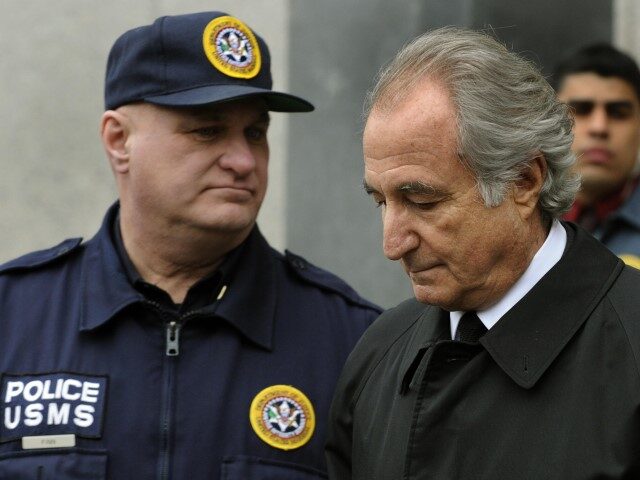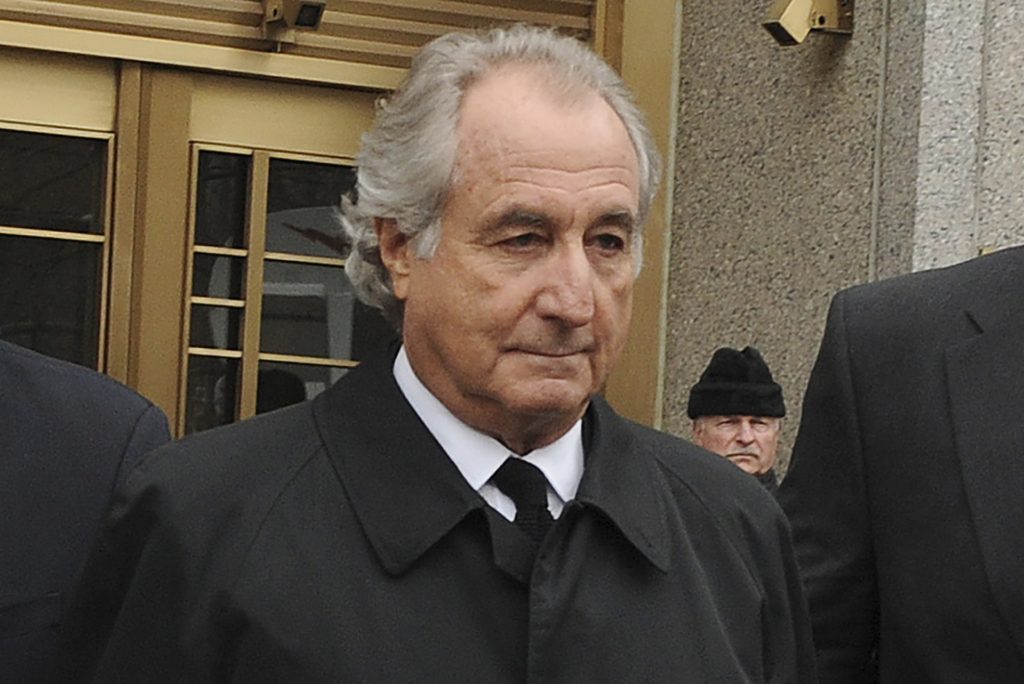The latest true crime limited series, Madoff: the Monster of Wall Street, is one of Netflix’s best in a long, long time. It’s also director Joe Berlinger’s best work since his masterwork, the Paradise Lost trilogy (1996-2011).
At first, because it’s more than four hours long over four episodes, this might look like another one of Netflix’s true-crime-waste-of-times, another one-hour documentary stretched to four interminable hours by way of repetition and dull filler. (Berlinger has been responsible for his share of these.) Thankfully, that’s not the case here. The Monster of Wall Street zips by. Every one of its 250 or so minutes is necessary to tell the story of Bernie Madoff, who is described more than once (and accurately) as a financial serial killer.
For those who don’t know, over two decades, Madoff took close to $20 billion — with a “B” — from individuals and hedge funds (who get their money from individuals) looking to invest with him. By the time it all collapsed in 2008, that $20 billion had swelled to some $65 billion, thanks to Madoff’s shrewd investing skills. There was just one problem. He didn’t invest that money. Not one penny of it. Instead, he used the money entrusted to him by widows and small business owners and a few billionaires to do two things: 1) fund his insanely luxurious lifestyle and 2) keep the Potemkin village of his Ponzi scheme alive.
And that’s all it was, a Ponzi scheme. He took your money and used that money to pay others while he skimmed a few homes and yachts for himself. In reality, out of that $20 billion, he only had about $330 million in his infamous “703” bank account.
When it all fell apart, thousands of people were wiped out. They’d trusted this former Chairman of NASDAQ. Worse, they’d trusted the SEC, who gave Madoff the equivalent of an A+ rating on more than one occasion.
Madoff went to prison in 2009, died in prison in 2014, and the Monster of Wall Street expertly lays it all out.
True Crime is at its best when it shows you How Things Are Done — both the crime itself and how the crime was uncovered. Monster is true crime at its best. You don’t have to know anything about how Wall Street operates to enjoy these four engrossing hours. Piece by piece, Berlinger walks you through every audacious and maddening creation of this white-collar heist. Thanks to some expert talking heads, most especially financial reporter Diana B. Henriques — who wrote the Wizard of Lies: Bernie Madoff and The Death of Trust in 2011, which is widely considered the best book on the subject (and was adapted into a very good HBO movie starring Robert De Niro as Madoff) — the what, how, and why of it all is expertly laid out. It’s like watching the silent heist in Rififi (1955). You can hardly believe that a) someone had the audacity to pull this off, and b) how many times the thief should have been caught and wasn’t.

Robert De Niro and Michelle Pfeiffer played Bernie and Ruth Madoff in the HBO film ‘The Wizard of Lies.’ (HBO)
Unfortunately, the only clunker in all of the 250 minutes comes from Henriques, who tries to blame it on that tired old canard of federal government budget and regulation cuts. Evil Ronald Reagan is the arch-villain or something.
And yet, the documentary itself proves that a laughable lie. First, whatever regulation rollbacks there were did not make what Madoff did legal. Secondly, how can Henriques claim the SEC was understaffed when the SEC investigated Madoff on at least four occasions? The SEC had plenty of staff. The problem is that the SEC, like all of the bloated federal government agencies, is either lazy, corrupt, incompetent, or all three.
Without getting into spoilers, was it staff shortages, budget cuts, and deregulation that stopped the SEC from making the two measly phone calls that would have blown Madoff’s con wide open? Here’s a guy mailing out thousands of statements every month claiming to do millions of stock trades, and not once did the SEC call the party he claimed to be trading with to confirm the trades. That’s all the SEC had to do, and the SEC didn’t.
Yeah, but it’s all Ronald Reagan’s fault. And by all means, let’s pour more money and bureaucrats into an institution so broken it didn’t make two phone calls. Great idea.
To be fair, the overall documentary does place the blame where it belongs, and that’s at the feet of Madoff and the SEC. They are the villains here.
Another villain was Irving Picard, the trustee in charge of recovering the money for bilked investors. According to the documentary, he billed for some $1 billion in legal fees. And on paper, he looks like a hero, having recovered about $14 billion of the $19 billion invested. But he also re-victimized countless number of victims. For example, those who were not wealthy but who took more out of the fund than they put in (e.g., a monthly retirement stipend) were sued to return that money.
Madoff’s family, who knew nothing about his crimes, were also victims, and with the help of the vicious media, Madoff annihilated that family. He also annihilated countless families guilty of nothing more than working hard and following the rules. The Monster of Wall Street doesn’t forget them.
If there’s a takeaway from this fascinating and tragic story, it’s that our government sucks. It’s all so broken, so corrupt that for two decades, a world-famous man said he was investing billions of dollars, didn’t invest even one red cent, and got away with it. Even after a portfolio manager named Harry Markopolos laid it all out for them on some five occasions, the SEC let Madoff get away with it.
The federal government has one job — to protect our rights. From Madoff to the wide-open southern border, we can all see how that’s working out.
Follow John Nolte on Twitter @NolteNC. Follow his Facebook Page here.


COMMENTS
Please let us know if you're having issues with commenting.